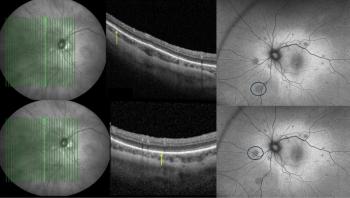
Primary IOL implantation relatively safe for infant aphakia
It is relatively safe and effective for infants to undergo primary IOL implantation for the correction of aphakia after having one cataract removed, according to new research out of China.
It is relatively safe and effective for infants to undergo primary IOL implantation for the correction of aphakia after having one cataract removed, according to new research out of China. Press-on spherical lenses are options for those unsuited to IOLs implantation add the investigators in an article appearing in
The study authors performed unilateral cataract extraction on 60 infants and then randomly assigned some of them to undergo IOL implantation and have any residual refractive error corrected with eyeglasses. Those patients not receiving IOLs were treated with press-on spherical lenses. The investigators measured grated visual acuity (VA) and followed the patients for up to a year.
All infants experienced better LogMAR VA in their operated eyes at 1 year compared with 1 month after surgery, although those receiving IOLs saw greater improvement. Those undergoing lens implantation also were more likely to experience serious inflammation, however, as well as visual axis opacity.
The prevalence of glaucoma was the same in both groups. There were no other complications.
To read an abstract of the study, visit the journal's
Newsletter
Get the essential updates shaping the future of pharma manufacturing and compliance—subscribe today to Pharmaceutical Technology and never miss a breakthrough.













































